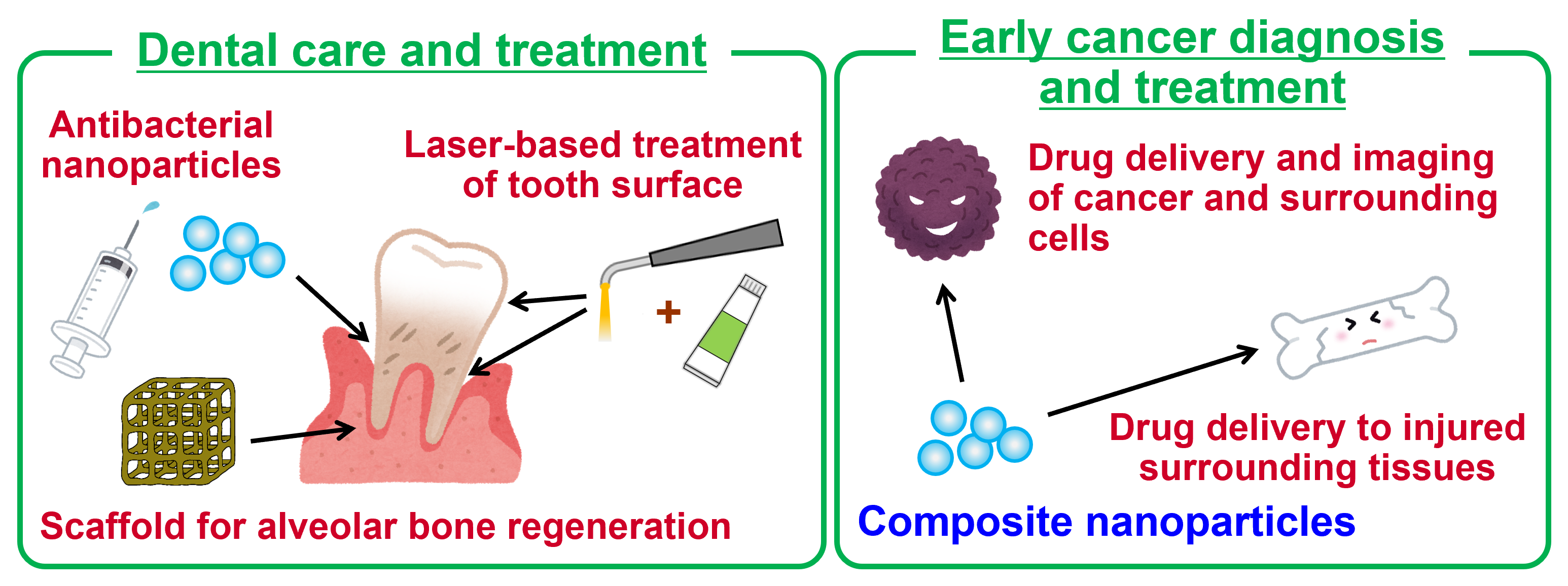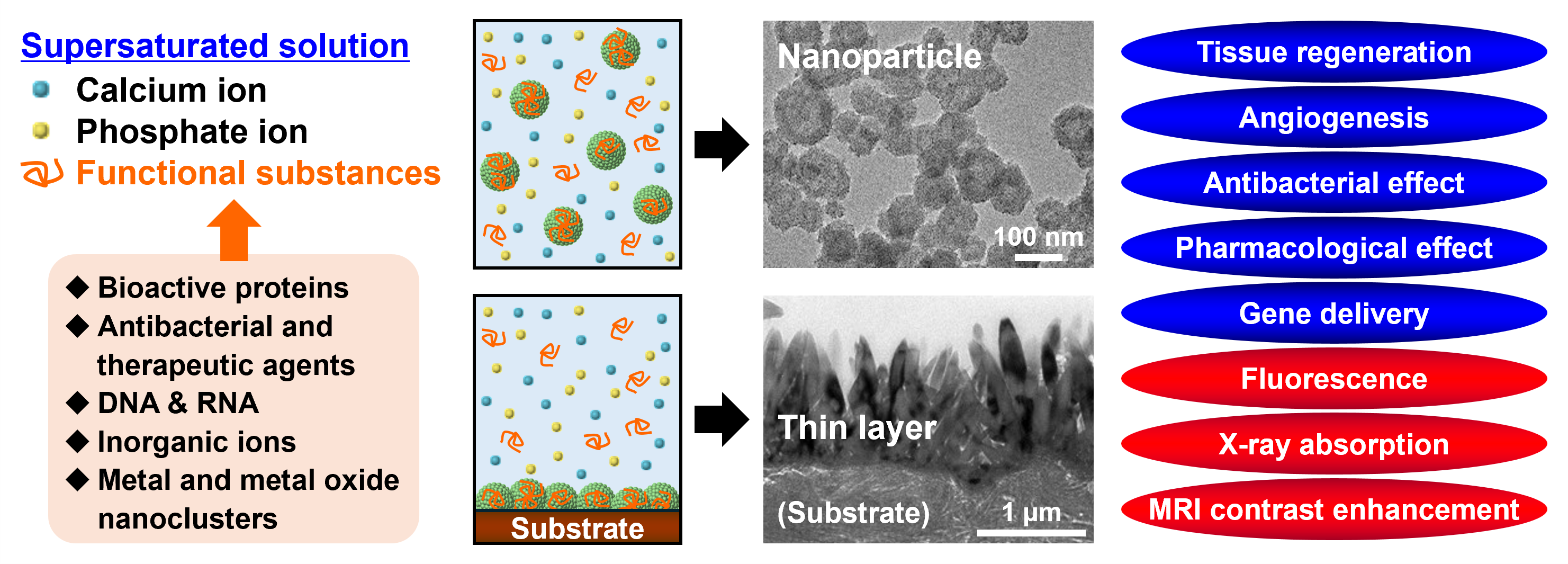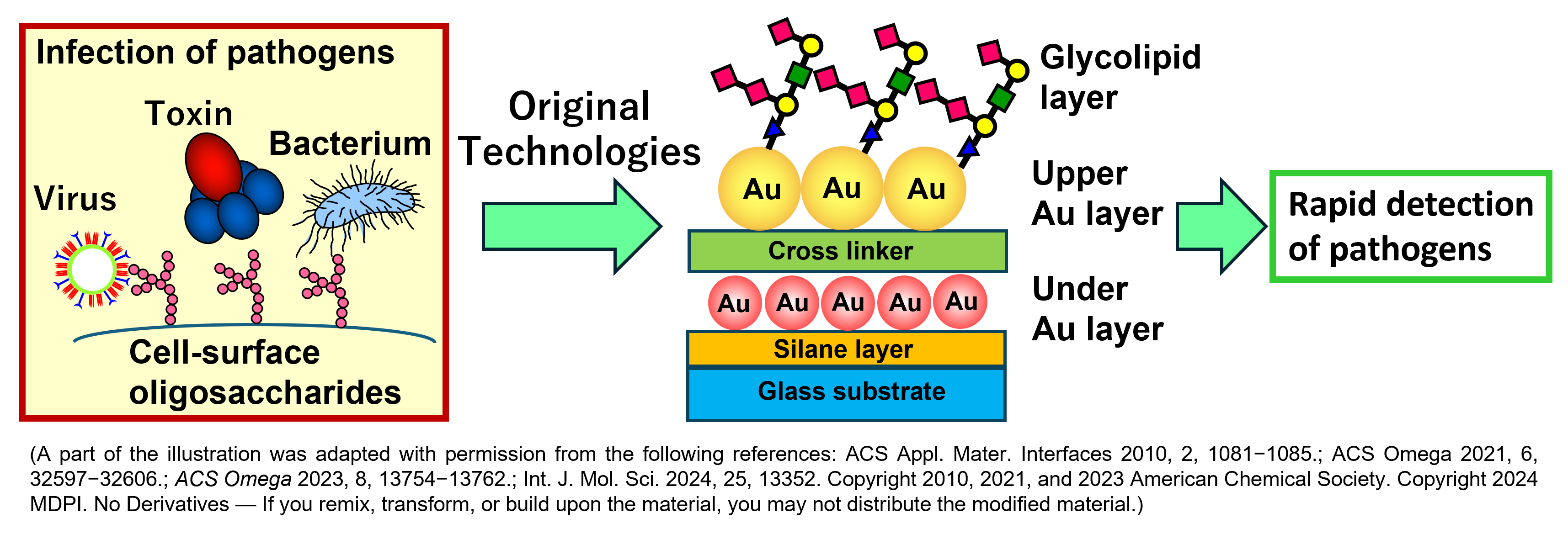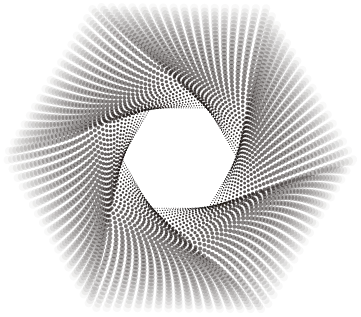Unit detailsBio-Application Materials Research Group
Bio-Application Materials Research Group
Ensuring well-being and healthy longevity in society through advanced materials technology
We develop advanced bioadaptive materials and biosensors for improved medical care and health promotion by utilizing cutting-edge technologies of fine-structured organic and inorganic materials (such as nanoparticles and thin films) and biomolecules.

Research Theme
Development of bioadaptive materials for health promotion and enhanced healing
We aim to develop bioadaptive materials that function in response to the biological environment, based on various materials, including calcium phosphate nanoparticles and thin layers immobilizing functional substances (see the next theme). By focusing on the development of materials and technologies for dental care and treatment as well as early cancer diagnosis and treatment, we aim to promote well-being and healthy longevity in society.

Development of fabrication techniques for functional calcium phosphate nanoparticles and thin layers
Calcium phosphates, including apatite, are biocompatible and safe materials. Calcium phosphate nanoparticles and thin layers that immobilize various functional substances, such as bioactive proteins, drugs, and imaging agents, can be fabricated from supersaturated solutions. However, this technique is associated with the following challenges: difficulties in controlling the structure and composition of the final product and the requirement of complex and time-consuming procedures. We aim to address these issues by combining conventional methods with molecular and laser technologies. The synthesized nanoparticles and thin layers can exhibit a variety of biological functions depending on the characteristics of the immobilized functional substances, making them promising candidates for application in pharmaceuticals, medical devices, biochemical reagents, and quasi-drugs.

Nanoparticles with high reactivity are expected to enhance the functionality of sensors in biomarker detection. However, nanoparticles exhibit structural instability and low dispersibility. We aim to address these challenges through the fine morphological control of nanoparticles. For example, we have synthesized niobium oxide nanoparticles with a sea urchin-like structure that show high reactivity, structural stability, and dispersibility, enabling the detection of trace amounts of biomarkers. Our goal is to extend healthy life expectancy through the development of advanced sensors and non-invasive wearable health-monitoring devices.

Antibodies and specific genes are commonly used to detect pathogenic viruses and bacteria. However, these methods are associated with low sensitivity, poor specificity, and lengthy detection. We aim to develop novel sensing materials based on the binding interactions between specific toxins and oligosaccharides as simple and rapid detection systems.

Group Members
Group Members
-
Leader, Group
Maki NAKAMURA
-
Senior Researcher
Wuxiao DING
-
Senior Researcher
Teruaki FUCHIGAMI
-
Researcher
Tomoya INOSE
-
Researcher
Erika ONUMA
-
Attached to the Research Division
Principal Research ManagerAyako OYANE



